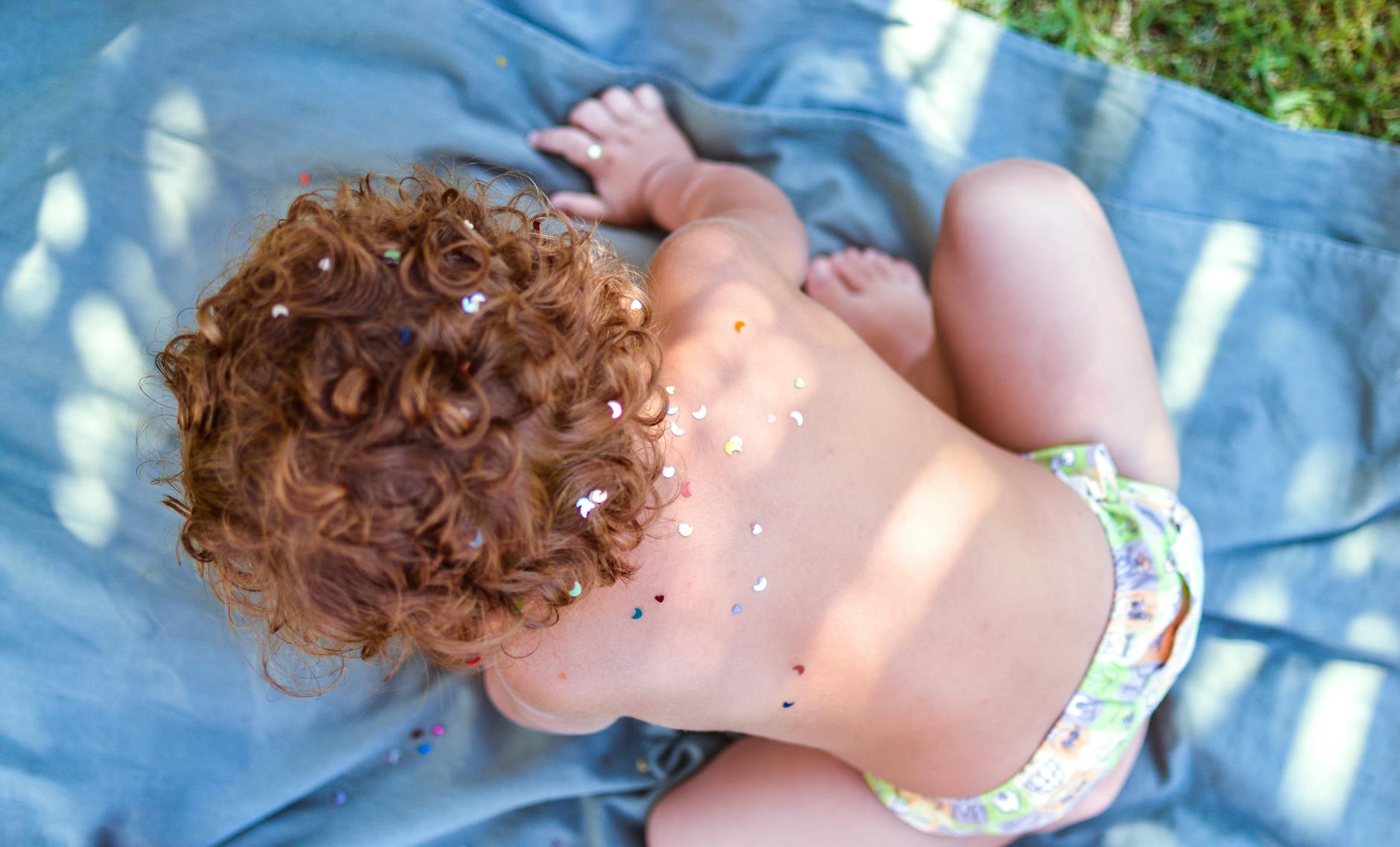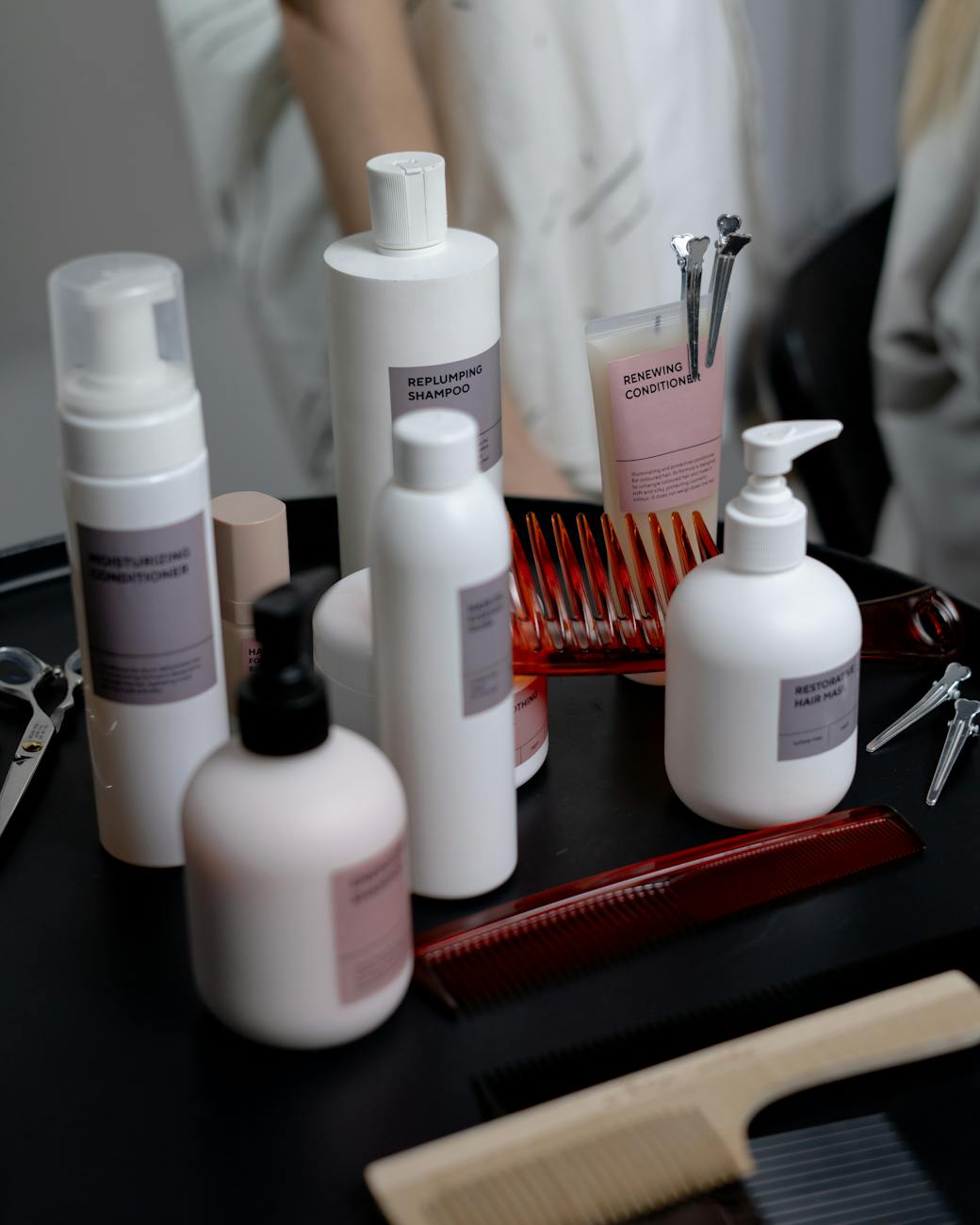Curl typing (wavy, curly, coily: Types 2A–4C)
Not all curls are created equal. Type 2 waves are loose and beachy, Type 3 curls spiral and bounce, and Type 4 coils? Glorious zigzags of tight texture. Knowing your kid’s curl type helps you pick products and routines that actually work — no more guessing games. Remember: they might even have more than one type on their head.
Porosity basics (low, medium, high)
Porosity tells you how well their hair holds moisture. Low porosity means the cuticle is tight — water rolls right off. High porosity means the hair soaks up everything but loses it fast. There’s a quick test: drop a clean strand into a glass of water. Sink = high. Float = low. In-between = medium. This one tip will save you so much product grief.
Density and texture
Density = how much hair is packed onto their scalp. Texture = how thick each individual strand is. Your kid might have fine, dense curls or thick, sparse coils. This matters because it changes how you style, detangle, and protect those strands. It’s not just about curl pattern — it’s about the whole picture.
How kids’ curls change over time
Spoiler: baby curls lie. Many kids start out with soft wisps or ringlets that evolve completely by age five. Puberty? Another plot twist. Be ready to adjust your approach as their hair matures — what worked at 4 may not cut it at 9. Flexibility is part of the job.
You got it. Let’s flesh that out with clarity, personality, and a touch of poetic flair, in the same tone as the rest of the book:
Density: How Much Hair Is Actually on Their Head?
Let’s get one thing straight: density has nothing to do with how tight the curls are.
You can have tight coils and still not have a lot of hair on your head.
You can also have loose waves that are thick as a lion’s mane.
It’s not the shape of the strands — it’s how many are packed onto that scalp.
Think of it like this:
If curl pattern is the shape of the strand, density is the crowd it rolls with.
Here’s how to break it down:
Low Density (a.k.a. Less Hair Per Square Inch)
You can easily see your child’s scalp when the hair is parted.
Styles may look a little more “airy” or soft.
These curls can look flat or stringy without the right care — and can be overwhelmed by heavy products.
💡 Pro Tip: Light, liquidy leave-ins and mousses are your friend. Too much cream can make it look limp.
Medium Density
Scalp is visible only when parted, not through the hair itself.
It holds styles fairly well, and responds predictably to products.
The Goldilocks of density — not too thick, not too thin.
💡 Pro Tip: You’ve got flexibility here. Experiment to see what works — just don’t assume one-size-fits-all.
High Density (a.k.a. Hair for Days)
We’re talking thick, lush, full-on volume.
Parting takes effort. Braiding takes stamina. You may need a break and a snack halfway through.
💡 Pro Tip: Heavier creams, curl butters, and defining gels can help clump and define curls without puffing out. Sectioning is essential — don’t try to tackle it all at once.
Why It Matters:
Product choice, styling routines, and detangling strategies all shift depending on density.
Two kids might have the same curl type (say, 3B), but one with high density will need way more product — and patience — than one with low density.
Understanding density helps you avoid overload… or under-care.
And remember: density can change over time. As your child grows, hormones, health, and even seasonal changes can affect it.
So keep checking in with what’s on their head — it’s always talking to you. Just maybe not in words.




